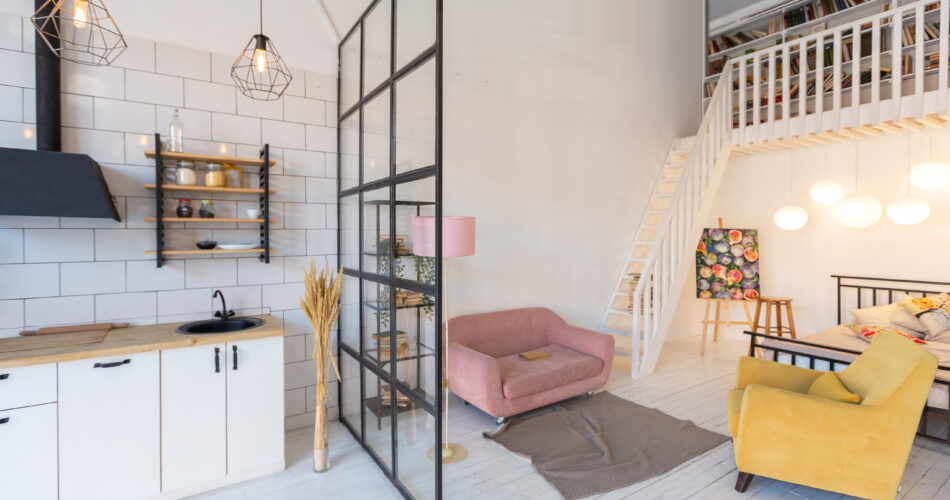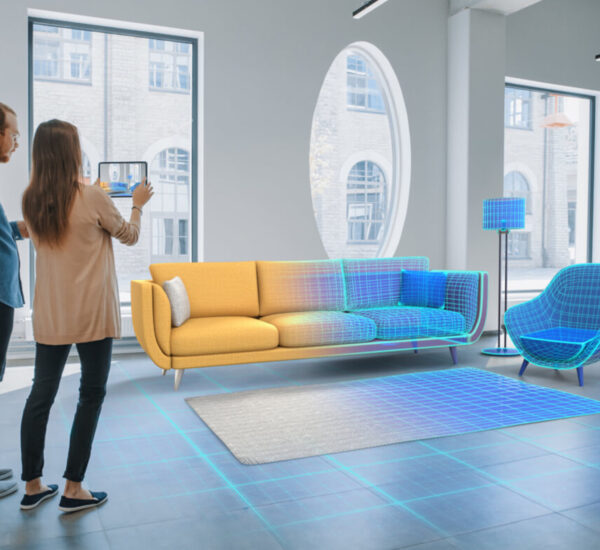Living in a compact space doesn’t mean sacrificing style or functionality. In fact, with the right design techniques, you can make a small room feel spacious, organized, and impactful. Whether you’re dealing with a tiny apartment, a cozy bedroom, or a cramped office, maximizing the potential of a small space is all about smart choices and creative solutions. In this post, we’ll share design tips that can help you make the most out of every square inch while maintaining a stylish and functional environment.
1. Use Light Colors to Create the Illusion of Space
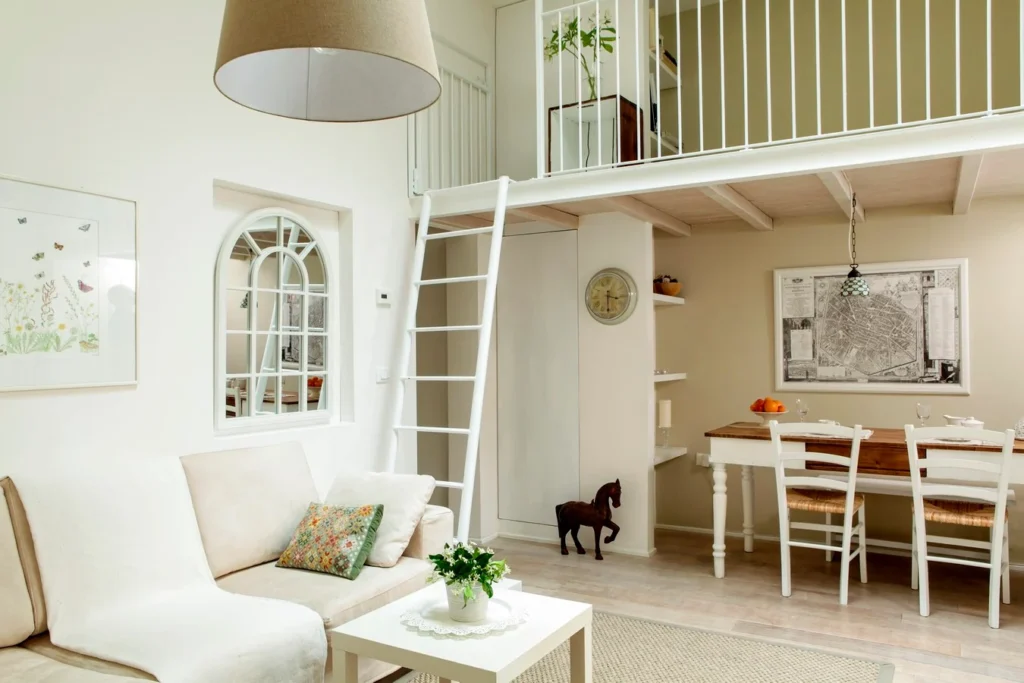
One of the most effective tricks for making a small room feel bigger is through the use of light colors. Lighter shades such as whites, light grays, pastels, and soft neutrals can reflect more natural light, creating an airy and open feeling.
- Walls and Ceilings: Opt for light tones for the walls and ceiling to visually open up the space. A crisp white or pale beige can make a room feel more expansive and inviting. Consider using a glossy finish on the ceiling to further reflect light.
- Furniture: Choose furniture in light colors or clear materials (like glass or acrylic) to avoid overwhelming the space. Soft neutrals like light wood or off-white can blend seamlessly into the room without crowding it.
- Why It Matters: Light colors bounce light around the room, making it feel brighter and more spacious. This is especially important in small rooms where natural light may be limited.
2. Opt for Multi-Functional Furniture
In small spaces, furniture needs to work overtime. Multi-functional pieces can help you make the most of limited square footage while keeping the room stylish and uncluttered.
- Sofa Beds: A sofa that transforms into a bed is perfect for studio apartments or guest rooms. It saves space and provides a comfortable sleeping area without the need for extra furniture.
- Storage Ottomans: An ottoman that doubles as both seating and hidden storage can keep your space neat and tidy. Look for options that offer extra compartments for stowing away blankets, magazines, or other items.
- Wall-Mounted Desks or Folding Tables: Instead of bulky desks, try a wall-mounted desk that folds away when not in use. This is ideal for home offices or small dining areas where space is at a premium.
- Why It Matters: Multi-functional furniture ensures that your space is as efficient as possible, helping you make room for everything you need while avoiding clutter and congestion.
3. Maximize Vertical Space
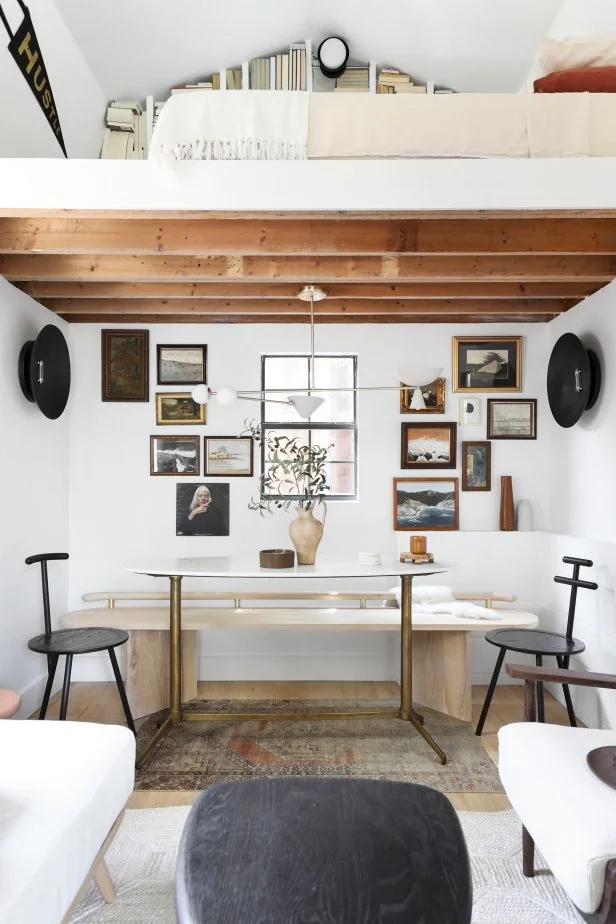
When you’re dealing with limited floor space, it’s crucial to look upward. Vertical space offers a great opportunity for storage and decoration without crowding the room.
- Tall Shelves and Bookcases: Use the full height of your walls by installing tall shelves or bookcases. These can store books, decorative items, or even hidden storage bins.
- Wall-Mounted Lighting: Replace traditional floor lamps with wall-mounted sconces or overhead lighting to free up valuable floor space. LED strips along the walls or under shelves can add both function and ambiance.
- Hanging Plants: Elevate your greenery with hanging plants or plant shelves. Not only does this free up floor space, but it also brings a touch of nature into your home.
- Why It Matters: By utilizing vertical space, you can store more and keep the floor area open and accessible, which helps the room feel more spacious and organized.
4. Embrace Minimalism with Clean Lines
A minimalist approach works wonders in compact rooms. Keeping furniture and decor simple, with clean lines and open spaces, reduces visual clutter and creates a sense of calm.
- Choose Sleek Furniture: Select furniture with thin legs or open bases. This creates an illusion of more space and prevents the room from feeling too heavy or overcrowded.
- Declutter Regularly: Keep only the essentials visible. Use storage baskets, boxes, or decorative containers to hide away everyday items and keep surfaces clear.
- Focus on Key Pieces: Instead of overcrowding the room with numerous items, focus on a few statement pieces that are functional and add personality, like an eye-catching light fixture or a well-designed chair.
- Why It Matters: A minimalist approach prevents a room from feeling visually heavy, making it seem larger and more open. Simple designs also help maintain a sense of serenity, which is key in smaller spaces.
5. Use Mirrors to Reflect Light and Add Depth
Mirrors are a game-changer when it comes to small spaces. They reflect both natural and artificial light, which brightens the room and gives the illusion of extra space.
- Large Mirrors: A large mirror on one wall can make the room feel double its size by reflecting light and creating depth. Try placing it opposite a window to reflect the outdoors or a light fixture to enhance brightness.
- Decorative Mirrors: Smaller, strategically placed mirrors can add a touch of style while contributing to the sense of space. Experiment with different shapes, sizes, and frames to find what works best for your room.
- Mirrored Furniture: Incorporating mirrored furniture, like coffee tables or side tables, can help bounce light around and add a touch of glamour to your space.
- Why It Matters: Mirrors don’t just create the illusion of space—they also improve the room’s lighting, making it feel airy and inviting. They’re a simple, cost-effective way to expand the visual size of a small room.
6. Incorporate Vertical or Horizontal Stripes
Pattern and texture can be a powerful tool in a small room, but it’s important to use them strategically. One design trick to consider is the use of stripes to elongate or widen the space.
- Vertical Stripes: Use vertical stripes on walls or furniture to draw the eye upward, making the room feel taller. This is particularly helpful in rooms with low ceilings.
- Horizontal Stripes: Horizontal stripes can make a narrow room appear wider. A striped accent wall or even a rug with horizontal patterns can create a sense of balance and openness.
- Subtle Patterns: If you’re hesitant to go bold, opt for subtle patterns that don’t overwhelm the space, such as soft chevron or pinstripes.
- Why It Matters: Stripes and patterns can trick the eye into perceiving a small room as larger or more balanced. They add visual interest while maintaining a sense of openness.
7. Declutter and Keep Things Organized
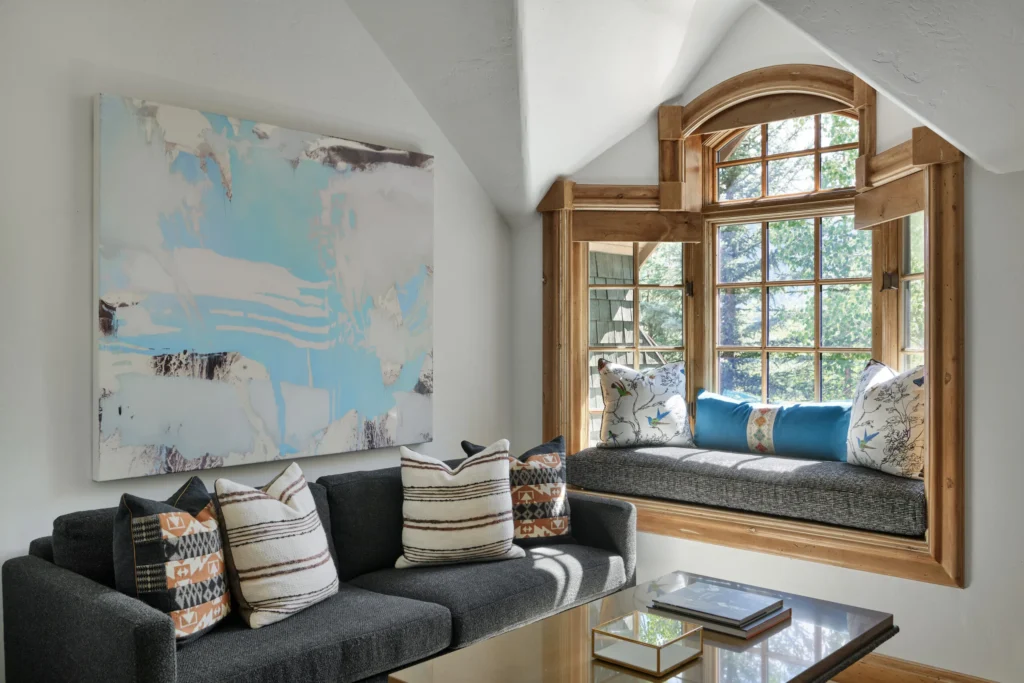
In a small space, every item counts. Keeping the room organized and clutter-free is essential for maximizing both its visual and functional potential.
- Use Hidden Storage: Invest in furniture that offers hidden storage options, such as beds with drawers underneath or cabinets with concealed shelves. This keeps your space tidy and organized without taking up extra room.
- Declutter Regularly: Get rid of items you don’t use regularly. A clean, minimalist space will instantly feel larger and more welcoming.
- Smart Organization: Use baskets, bins, or hanging organizers to keep items in order. Keep everything in its place to prevent clutter from taking over the room.
- Why It Matters: A clutter-free room instantly feels more spacious. By keeping only what you need and storing things out of sight, you can create a clean, functional space that feels larger than it actually is.
Conclusion
Designing a small space requires creativity and strategic planning, but with the right approach, even the tiniest rooms can make a big impact. By using light colors, multi-functional furniture, vertical space, and clever design tricks like mirrors and stripes, you can create a room that feels open, organized, and stylish. Embrace minimalism, keep things clutter-free, and be intentional with every design choice to ensure that your compact space works hard and looks beautiful. With these tips, you can transform any small room into a big, bold statement of design.

